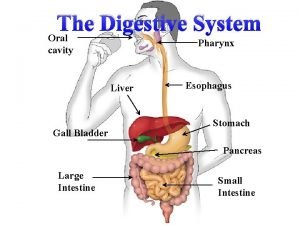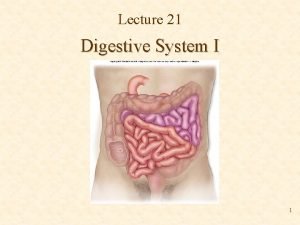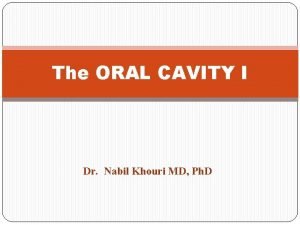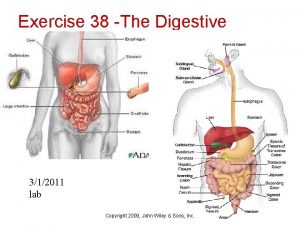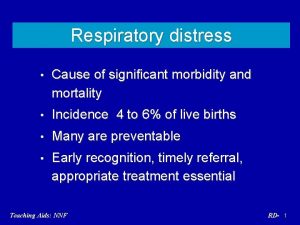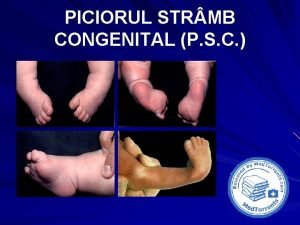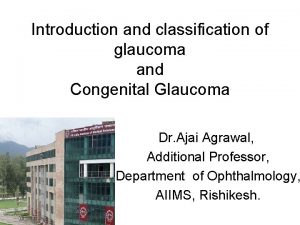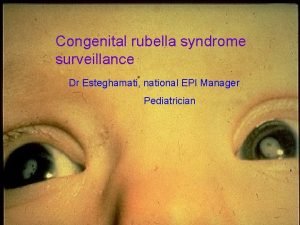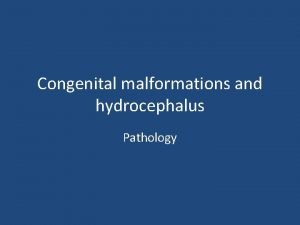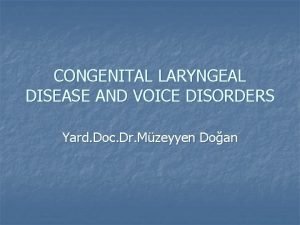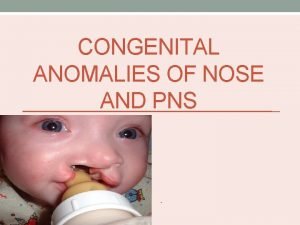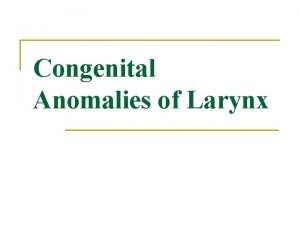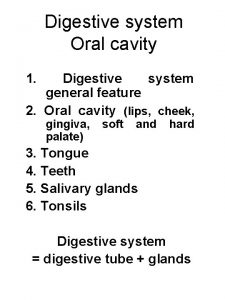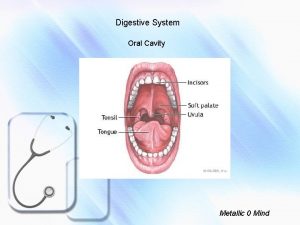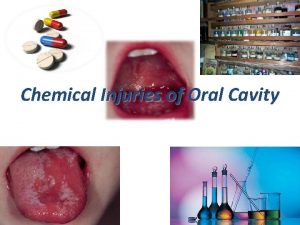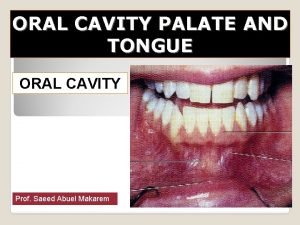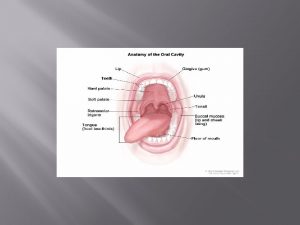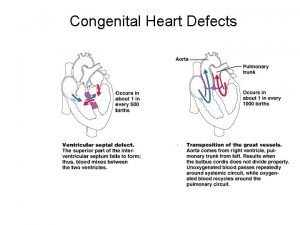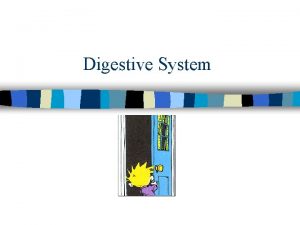DIGESTIVE SYSTEM I ORAL CAVITY IDENTISTRY 1 CONGENITAL






























- Slides: 30

DIGESTIVE SYSTEM I- ORAL CAVITY

I-DENTISTRY



1 -CONGENITAL ANOMALIES OF THE TEETH

B- Oligodontia 1 -Pseudo-oligodontia 2 -True Oligodontia

C-Polydontia (supernumerary teeth) Pseudo- or true Clinical signs Treatment

D- Diastasis Dentium (Diastema) It is frequently observed in horses, donkeys, and dogs and less common in cattle

Causes: 1 -Congenital causes � Failure in the position of the tooth bud during embryonic stage of � Torsion or rotation of the tooth during development � supernumerary 2 -Developmental causes � Retention of one deciduous tooth � Impaction of one permanent tooth � Extraction or missing of one tooth �Clinical signs �Treatment

2 -DEVELOPMENTAL ANOMALIES OF THE TEETH

A-Sharp Enamel Points (sharp teeth) �Causes �Signs �Treatment

C-Projection Of The Tooth (Hooking)

D-Elongation of Tooth (Exsuperantia dentium)

3 - DISEASES OF THE TEETH

A-Dental Tartar Or Dental Calculi (Odontolithiasis) �It is a salivary concretion that accumulates on the dental surfaces

Causes �Soft and convenient diets �The first stage in the formation dental plaque. consists of food debris, leukocytes, microorganisms and desquamated epithelial cells. �The second stage is mineralization of the dental plaque. through calcium and phosphorus salts present in the saliva.

Signs �Offensive fetid bad breath �Gingivitis �Periodontal disease �Dental calculus varies in color from grayish -white to grayish –brown. �It has a rough surface which encourages further build-up of plaque. �The common seats of calculus formation are the lingual surface of the incisors especially that of the lower jaw, around the canines and the buccal surfaces of premolar and molar teeth.

Treatment: Hand or mechanical scaling: � Large calculi can be dislodged � washed with mild antiseptic solution � The stains of the teeth are removed by using 3% H 2 O 2 or 1% HCl. � Inflamed gum is swabbed with Tr. of iodine or glycerine/iodine combination. � Dogs must be given raw meat and bones. � Periodical brushing �


B-Periodontal Disease inflammation and/or degeneration and destruction of the soft and hard tissue which surrounds and supports the teeth.

• Dental tarter • Recession of gum M. Os • protease, collagenase and elastase enzymes • Peidontal pockets

Signs �Bad breath, yellow teeth and facial swellings �Gingivitis and ulceration �Recession of the gum �Tooth mobility �Osteoclastic resorption of the alveolar bone �Abscessation �Pulpitis �pathological fracture or dental fistula. �Toxins lead to endocarditis, nephritis and hepatitis

Diagnosis: �Clinical signs �Inspection of gingival sulcus �Radiography Treatment: - Professional treatment: �scaling, polishing, elimination of any stagnation area and extractions. �Gingivectomy in case of hyperplastic gingivitis. �Systemic antibiotics - Home care and maintenance: �dietary and artificial oral hygiene aids by owners.

C-Dental Caries �progressive, localized and circumscribed decay or disintegration of the tooth substance with subsequent formation of a hole, which increased in width and depth until reaches the pulp cavity

Causes: �Small fissure and invasion of acid forming M. Os �Softening of the substance of the tooth by decomposed saliva and fermented �food materials accumulated infundibulum �Entrapment of food at the spaces between the teeth and fermentation �Hypoplasia of the enamel �Deficiency of trace elements and vitamins

Signs: � yellow spot which changed quickly into brown or black � Formation of a hole � defects that extend to the pulp and root apex � Severe pain when drinking during mastication � Offensive odor from the mouth � Cemental or infundibular caries (cemental necrosis) develops within theinfundibulum

Treatment: �Extraction �Repulsion. �filling

E-Dental Fistula �A purulent tract connecting between the alveolus of the affected tooth and the outside surface of the skin.

Causes: �Alveolar periostitis �Abscess at the root of the tooth Clinical signs: �Fistual the level of the upper jaw in dogs and lower jaw in horses �The opening is small funnel-shaped, discharging pus with very foetid odor �Swelling of the bone and skin around the fistual opening � 4 -Metal probe is passed through the canal, striking the root of the tooth, and a hell-like sound is heard

Treatment: �Extraction of the involved tooth �Curetting of the fistula and washing with antiseptic solution NB: Fistula resulting from a splintered fracture of the mandible or maxilla may be known as false dental fistula. characterized by: �short canal and small opening �dull sound by metal probe, �the inflammation of the bone around the opening is slight, discharged pus is small in amount and not very bad smelling, �teeth are healthy
 Orbital body cavity
Orbital body cavity L
L Body planes and cavities
Body planes and cavities Which membrane encloses the abdominopelvic viscera?
Which membrane encloses the abdominopelvic viscera? Lesser peritoneal cavity
Lesser peritoneal cavity Peritoneum vs mesentery
Peritoneum vs mesentery Digestive system circulatory system and respiratory system
Digestive system circulatory system and respiratory system The roof of the oral cavity
The roof of the oral cavity Pyloric orifice function
Pyloric orifice function Landmarks of the face and oral cavity
Landmarks of the face and oral cavity Classification of white lesions of oral cavity
Classification of white lesions of oral cavity Raphe palatini
Raphe palatini Throat paints are ………. liquid preparations. *
Throat paints are ………. liquid preparations. * Exercise 38
Exercise 38 Normal flora of oral cavity
Normal flora of oral cavity Epithelial component
Epithelial component Nervous system and digestive system
Nervous system and digestive system Ttn vs rds cxr
Ttn vs rds cxr Congenital pneumonia
Congenital pneumonia Picior stramb congenital
Picior stramb congenital Stumped cloudy cornea
Stumped cloudy cornea Eisenmenger syndrome
Eisenmenger syndrome Congenital rubella syndrome
Congenital rubella syndrome Congenital malformations
Congenital malformations Congenital voice disorders
Congenital voice disorders Congenital hypothyroid
Congenital hypothyroid Tetralogy of fallot xray
Tetralogy of fallot xray Knee chest position
Knee chest position Congenital fibrosis of the extraocular muscles
Congenital fibrosis of the extraocular muscles Proboscis lateralis
Proboscis lateralis Arytenoid mucosa
Arytenoid mucosa

